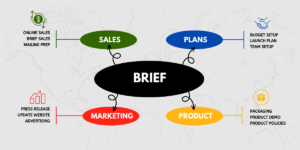As real estate professionals we all know that we have extended Sales cycle. The cycle extends further when it comes to luxury properties. This can make it challenging to directly attribute marketing efforts to immediate sales, making it difficult to demonstrate long-term ROI. We have all witnessed the attribution channel, isn’t it? I have been able to bring down the marketing cost by 25% by implementing the below mentioned strategies. They solutions are suggested below based on experience to overcome these ROI challenges. Hope this helps you.
Understanding the Challenges
- Delayed Conversion: The time between initial contact and a closed deal is often lengthy – sometimes a week or even more to a quarter. Especially when you project is not in the launch but sustenance phase.
- Multiple Touchpoints: Customers interact with various marketing channels over time, making attribution complex. A customer who is exposed to various medium digital, outdoor, radio etc. hence, the customer has the freedom to witness the project ad while travelling to office in a digital board, but he might go home and drop a lead when he sees the same ad on his Facebook page.
- External Factors: Market fluctuations, infrastructure growth story can impact sales cycles, making it difficult to isolate marketing’s impact.

Strategies for Demonstrating Long-Term ROI
- Customer Journey Mapping: By understanding the entire customer journey, marketers can identify touchpoints that influence the buying decision. All, your marketing campaign needs to be properly integrated with your back end. Each marketing channel should have a unique UTM (when it comes to digital), Call to Action Number (when it comes to outdoor hoarding or print). In this manner you will be able to track the exact source from where the customer came in for the first time. Post that his journey can be tracked in your system till the closure.
- Lead Scoring and Nurturing: Implementing a robust lead scoring system helps prioritize leads based on their engagement level and potential value. Nurturing leads over time increases the likelihood of conversion. For example, reaching out customers with help of watsapp messages, tailored emails and SMS will help revive the leads. In case there is an offer you are running for a certain quarter do send across the communication to database you have at your end. This might excite someone and you can revive the lead for closure.
- Marketing Qualified Leads (MQLs) to Sales Qualified Leads (SQLs) Conversion: Tracking the conversion rate from MQLs to SQLs provides valuable insights into campaign effectiveness. Always, keep a track source wise – lead to qualified lead to site visit to conversion percentage. This will give you an idea which vertical is working better for you and where you should invest your money. A sample chart is mentioned below for reference.
| Source | Lead | Qualified Lead | % Lead to Qualified lead | Site Visit | % Qualified Lead to Site Visit | Conversion | % Site Visit to Conversion |
| Digital | Add numbers | Add numbers | QL/L | Add numbers | SV/QL | Add numbers | Conv/SV |
| Non-Digital | Add numbers | Add numbers | QL/L | Add numbers | SV/QL | Add numbers | Conv/SV |
| Rechurn | Add numbers | Add numbers | QL/L | Add numbers | SV/QL | Add numbers | Conv/SV |
| Total |
- Customer Lifetime Value (CLTV): Measuring the total revenue generated by a customer over their lifetime helps demonstrate the long-term impact of marketing efforts. For example, a satisfied buyer who refers friends and family to the agency or purchases additional properties contributes to a higher CLTV.
- Qualitative Feedback: Gathering feedback from customers can reveal the influence of marketing on their buying decisions. For example, a customer might mention a particular social media campaign that inspired them to contact you.
- Benchmarking: Comparing performance to industry standards helps identify areas for improvement and demonstrate the value of marketing efforts. For instance, benchmarking click-through rates for email campaigns against industry averages can highlight the effectiveness of a specific campaign.
- Marketing Automation: Utilizing marketing automation tools can streamline processes, improve efficiency, and provide valuable data insights. This is a efficient tool to regenerate old leads, make existing leads feel special and create a unique experience for each customer. This tool helps deliver personalized content to leads based on their behavior. We should all start using this tool a lot. To generate more ROI from our marketing initiatives.

Key Metrics to Track
- Lead Generation: Number of leads generated, lead quality, and conversion rates and expenses.
- Website Metrics: Website visits, bounce rates, organic conversions and time on site.
- Social Media Engagement: Likes, shares, comments, and follower growth.
- Email Open and Click-Through Rates: Measure email campaign effectiveness.
- Customer Acquisition Cost (CAC): Calculate the cost of acquiring a new customer.
- Customer Lifetime Value (CLTV): Determine the total revenue generated by a customer.
By implementing these strategies and tracking the right metrics, real estate marketers can effectively demonstrate the long-term ROI of their campaigns and secure ongoing support for their initiatives.
Would you like to explore any of these points in more detail or discuss specific examples from my real-life examples?





